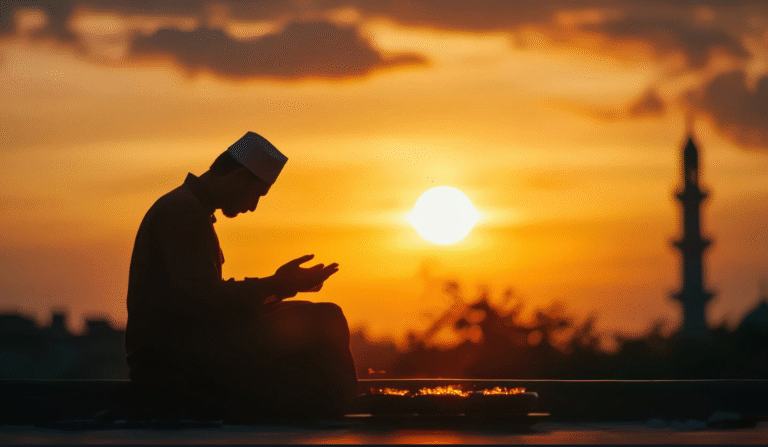With more than one billions believers on each continent, Islam is one of the most famous religions in Islam. Muslims around the world have different languages, customs and traditions but all bound together by shared belief that Allah is one and only and the only Creator of this world, Prophet (PBUH) is the last prophet of Allah and Quran is the source of guidance sent by Allah. Islam has merged with the diverse local cultures, customs and languages to create a unique framework that can been seen anywhere from the busy streets of Cairo to the quite village of Indonesia. This diversity is seen in a way how Muslims manage their community, worship and celebrate festivals. However, despite of these difference, there is a strong of religious solidarity that shows Islam is universal and flexible. By examining these diversities, you can see how Islam brings people from all backgrounds together.
Unity of Beliefs at the Core
The five pillars of Islam —Shahada, Salah, Swam, Zakat and Hajj —bring together Muslims from all over the world regardless of their different cultures and practices. These pillars serve as the cornerstone of Islamic life assuring that core principles of belief are the same whether a Muslim is in Turkey, Nigeria and Malaysia. For example, Muslims face Kaaba during the Salah and fasting during Ramadan from dawn to sunset is observed in each part of the Muslim world. Islam will continue to be a worldwide community of believers tied together by faith due to this shared spiritual framework.
Diversity of Cultures and Practices
The way Muslim live and practice Islam could differ widely based on culture and location, even though the fundamental beliefs remain the same.
1. Language and Expression of Faith
As sermons, religious instruction and Islamic lectures are usually delivered in local languages, the Quran is always recited in Arabic. The Friday khutba may be delivered in Bahasa in Indonesia, Arabic in Egypt and Hausa in Nigeria. By using local languages, Islam stays close to daily life of people.
2. Dress and Modesty
Islam place a high value on modesty, although how it is expressed depends on cultural norms. Women in Pakistan usually wear shalwar kameez, but in Saudi Arabia often wear Abayas. Headscarves and colourful clothing in West Africa are the reflection of culture and Islamic principles. Men also wear different dresses, many prefer suits and others wear sarongs or thobes while following Islamic modesty.
3. Food and Festivals
Although Muslims follow the same halal dietary regulation, but their food choices vary greatly. ., Local tastes are presented in Pakistani biryani, Indonesian satay, Moroccan tagines and Turkish kebabs while adhering to Islamic principles. Similarly, Eid festivals vary among the Muslim world. Whole ketupat is celebratory dish in Malaysia and Muslims in Egypt enjoy kahk. Because of these cultural expressions, Islamic practices are diverse and colourful.
4. Mosque Architecture
Diversity is also encouraged in Islamic architecture. In China, Mosques may look like pagodas, but in Turkey, they are identified by their Ottoman-inspired domes and minarets. These scared places are show variations in appearance while maintaining unity in purpose.
Beliefs and Schools of Thought
Interpretations and school of thoughts represent another aspects of diversity in Islam. The Muslim world has been shaped by variations in theology and jurisprudence, even though all Muslims share a common knowledge of the core principles of faith.
Sunni and Shia Traditions
The two major sects of Islam are Sunni and Shia. Their difference started mostly on leadership and history after the death of Prophet (PBUH). Shia communities are mainly live in places like Iran, particular parts of Iraq, Bahrain and Lebanon, whereas Sunnis are make up the majority of Muslims. Even with these differences, both Sunnis and Shia believe in Allah, follow the teachings of Prophet (PBUH) and adhere to the Quran.
Schools of Islamic Law (Fiqh)
Hanafi, Maliki, Shafi’i and Hanbali are the four main school of Islamic laws, within Sunni Islam. All are accepted as valid in Islam, despite the fact that all are formed in different places and provide slightly varied guidelines for daily practices. Similarly, Shia Muslims usually adhere to the Ja’fari school. These schools shows how Islam can adapt to different situations without losing its core values by reflecting intellectual diversity.
Obstacles and myths
Islam often encounters stereotypes despite of its huge diversity. Some people believe that Muslim lead the similar lives, but the truth is far more diverse. A Muslim in Indonesia may lead a quite different life from a Muslim in Senegal, but both united by their shared faith. Another misconception is diversity produces bitterness and division. Wide range of cultures and practices actually shows inclusion, flexibility and broad acceptance rather than weakness. One of Islam’s greatest advantage is its capability to accept diverse cultures and traditions while maintaining its religious integrity.
Diversity as Strength in the Muslim World
Bringing individuals from many backgrounds, cultures and languages together under the umbrella of Islam is one of the most admirable features. The diversity is a strength rather than a weakness. Although, Muslims in Nigeria, UK, Turkey and Indonesia may follow Islam slightly in different ways. But they all are united by shared practice of prayers, fasting in Ramadan, charity and believe on Oneness of Allah. In the Muslim world, diversity can foster mutual tolerance, brotherhood and closer ties rather than hostility. The fact that Islam is faith that is shared by the all people, not simply member of particular tribe or country.
